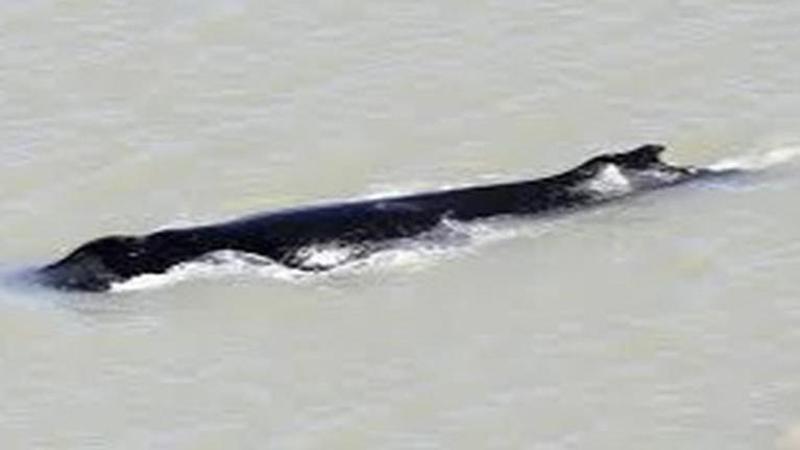Published 16:40 IST, September 14th 2020
Australians hope to save whale from crocodile-infested river
Marine authorities were puzzling on Monday over how to persuade at least one wayward humpback whale to leave a murky, crocodile-infested river in northern Australia and continue an annual migration to Antarctica.

Marine authorities were puzzling on Monday over how to persuade at least one wayward humpback whale to leave a murky, crocodile-infested river in northern Australia and continue an annual migration to Antarctica.
There have been no previous recorded sightings of whales in East Alligator River in the Northern Territory’s World Heritage-listed Kakadu National Park, and no one can explain why at least three of the blue water mammals ventured so deep inland in a river with little visibility.
Marine ecologist Jason Fowler said he spotted three whales on Sept. 2 while sailing with friends more than 20 kilometers (12 miles) from the river's mouth.
“We happened to bump into some great big whales which completely blew me away,” Fowler said on Monday.
“The water’s incredibly murky. It’s got zero visibility. So you can only see the whales when they’re right on the surface,” he said.
He estimated there were two adults and a younger whale, around 10 meters (33 feet) to 12 meters (39 feet) long.
“The west Australian humpback whale population has absolutely exploded. It’s the great conservation success story in the ocean,” Fowler said.
“There are so many humpbacks heading up the W.A. (Western Australia state) coast now, they’re bound to end up in new places. What’s incredibly weird is the fact that they’re up a muddy, shallow river full of crocodiles -- that’s unheard of,” he said.
Despite the river’s name, there are no alligators in Australia. It was named after its many crocodiles by European explorers who apparently couldn’t tell the difference.
Northern Territory government whale and dolphin scientist Carol Palmer said there was at least one whale still in the river on the weekend.
“We don’t know what’s happened, but it’s obviously made a wrong turn and ended up in the East Alligator River,” she added.
“It’s very tidal. It’s quite shallow and we’re all pretty keen to try to get this guy out,” Palmer told Australian Broadcasting Corp.
Options to persuade the whale to leave the river included using recorded whale calls or creating noise by banging the side of boats.
Whale call recordings have been used successfully to entice a humpback whale out of San Francisco Bay. Driving a whale away with noise from a lineup of boats worked in Australia’s Tasmania island state.
“The crocodile wouldn’t be used to seeing a humpback whale,” Palmer said. “The humpback whale is large enough that none of us think that the crocodiles are going to try to have a go at the humpback.”
Fowler said the whale or whales are probably becoming tired from swimming against strong tides to remain in the same part of the river.
“We spoke to the Aboriginal elders who speak for that bit of country in Kakadu and they said there’s no name for whales,” Fowler said. “It’s not recorded in their cultural history. They’ve never heard of this before.”
Updated 16:40 IST, September 14th 2020




